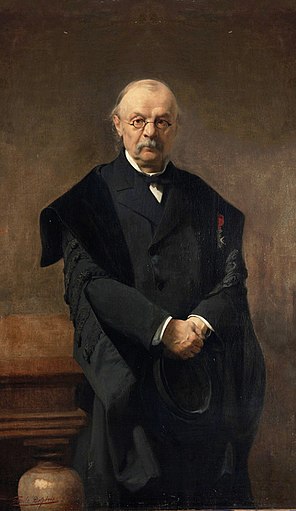Eugène Charles Catalan – Wikipedie
Jeho otec byl klenotníkem a chtěl, aby se Eugène v tomto řemesle také vyučil. V roce 1824 se tři měsíce skutečně klenotníkem učil, ale otec musel uznat, že mu pro toto řemeslo chybějí vlohy.
Eugène Charles Catalan - Wikipedia
Eugène Charles Catalan ( French pronunciation: [øʒɛn ʃaʁl katalɑ̃]; 30 May 1814 – 14 February 1894) [2 ] was a French and Belgian mathematician who worked on continued fractions, descriptive geometry, number theory and combinatorics.
Eugène Charles Catalan – Wikipedia
Catalan arbeitete an Kettenbrüchen, Darstellender Geometrie, Zahlentheorie und Kombinatorik. Die berühmte Catalansche Vermutung veröffentlichte er 1844, welche erst 2002 von Preda Mihăilescu bewiesen wurde.
Talk:Eugène Charles Catalan - Wikipedia
I have often seen him cited as Eugene Catalan but never with a middle name. I think the article should be called "Eugene Catalan" on the WP principle that the usual form of name is the article title.
Soubor:Eugene charles catalan.jpg – Wikipedie
Oficiálním stanoviskem nadace Wikimedia Foundation je, že „věrné reprodukce dvourozměrných volných děl jsou také volné a opačná tvrzení jsou útokem na samotný koncept volných děl.“
Eugène Catalan (1814 - 1894) - Biography - MacTutor History of…
Eugène Catalan was born in Bruges and although we have given this as being in Belgium, it actually was in France at the time of his birth.
Catalan's Conjecture -- from Wolfram MathWorld
The conjecture made by Belgian mathematician Eugène Charles Catalan in 1844 that 8 and 9 (2^3 and 3^2) are the only consecutive powers (excluding 0 and 1). In other words, 3^2-2^3=1 (1) is the only nontrivial solution to Catalan's Diophantine…
Ottův slovník naučný/Catalan – Wikizdroje
Catalan [ka-] Eugène Charles, mathematik franc. (* 1814 v Bruggách). Absolvovav polytechniku stal se professorem v Châlons-sur-Marne.
About: Catalan
An Entity of Type: Thing , from Named Graph: http://dbpedia.org, within Data Space: dbpedia.org
odkazuje na služby nejen od Seznam.cz.
© 1996–2025 Seznam.cz, a.s.


